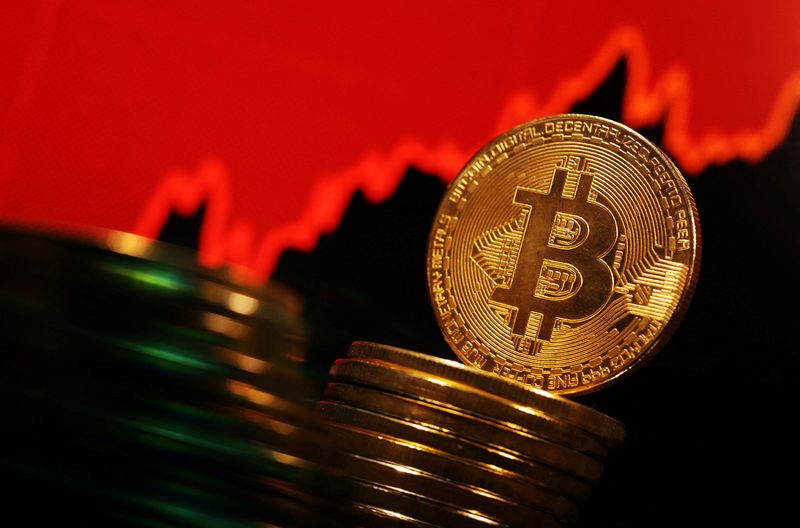Investing.com -- Bitcoin's price surged by 120% in 2024, reaching a record high of $108,316 in mid-December, before retreating to $90,000—a 17.5% decline from its peak. This correction coincided with substantial withdrawals from US spot Bitcoin ETFs, including a net outflow of $583 million in a single day.
In a Tuesday note to clients, Deutsche Bank (ETR:DBKGn) analysts examined the historical patterns behind Bitcoin’s dramatic price movements, which could offer insights into its future trajectory.
Since its inception, Bitcoin has experienced four major structural rallies, each lasting over 750 days and yielding average gains of 57,870%. Deutsche Bank points out that these extended rallies are closely tied to Bitcoin’s halving events, which reduce mining rewards approximately every four years.
For instance, the most recent rally from November 2022 to December 2024 saw a 581% price increase, driven in part by the 2024 halving event that tightened supply.
In addition to these long-term trends, Bitcoin's price history features 23 shorter rallies since 2011, often lasting less than a year. These were typically fueled by macroeconomic shifts or changes in market sentiment.
Before 2018, such rallies averaged gains of 528% over 77 days, while post-2018, their magnitude has decreased to 136% but their duration has extended to 103 days.
In contrast, Bitcoin’s drawdowns have been notably more frequent, Deutsche notes. Since 2011, there have been 19 corrections of more than 20%, with an average magnitude of 44%. “Such episodes tended to cluster pre-2018 but have become more spread-out since, but also longer (82 days pre-2018 and 194 after) and deeper (-41% and -50%) on average,” the report reveals.
Institutional adoption has become a key driver of Bitcoin’s market dynamics. The launch of Bitcoin futures in 2017 and spot ETFs in 2024 has boosted liquidity and market sophistication. However, the second-largest outflow in the history of US spot Bitcoin ETFs last week underlines how sensitive Bitcoin remains to shifts in investor sentiment.
Regulatory developments also play a vital role in shaping Bitcoin’s performance. The latest example of this is the optimism that emerged following Trump’s win in the US election.
Trump administration’s pro-crypto stance and the forthcoming appointment of Paul Atkins as SEC Chair has lifted market expectations.
“The forthcoming appointment of Paul Atkins, a deregulation advocate, as SEC Chair signals a shift towards an innovation-friendly approach, prioritizing clear regulatory guidelines for digital asset markets and reducing enforcement actions,” Deutsche analysts said.
“This, coupled with a Republican-controlled Congress, could foster a positive regulatory environment by signalling an intent to pass cryptocurrency-friendly legislation, positioning the U.S. as a global leader in blockchain innovation,” they added.
In sum, Bitcoin's price movements are shaped by a combination of macroeconomic factors, institutional adoption, halving events, and regulatory developments. The 2024 rally reflects the impact of both short-term catalysts and long-term structural shifts.
According to Deutsche, the trajectory ahead will depend on whether the Federal Reserve maintains high interest rates and if the Trump administration delivers on its pro-crypto promises. The potential for regulatory reform and a looser monetary policy remain central to Bitcoin's future performance.
Which stock should you buy in your very next trade?
AI computing powers are changing the stock market. Investing.com's ProPicks AI includes 6 winning stock portfolios chosen by our advanced AI. In 2024 alone, ProPicks AI identified 2 stocks that surged over 150%, 4 additional stocks that leaped over 30%, and 3 more that climbed over 25%. Which stock will be the next to soar?
Unlock ProPicks AI